14 Most Fascinating Sights In Doi Ang Khang (2025)
Doi Ang Khang is an awe-inspiring mountain nestled in the Fang District of Chiang Mai Province, Thailand. As part of the majestic Daen Lao Range, it straddles the Thai-Burmese border and captivates travelers with its stunning vistas. Famous for its vibrant agricultural station, Doi Ang Khang holds historical significance as the site of the first research station founded by King Bhumibol Adulyadej in 1969. Visitors can explore breathtaking terraced fields, marvel at the diverse flora and fauna, and learn about the region’s pioneering agricultural methods. A trip to Doi Ang Khang promises an unforgettable experience, showcasing the natural beauty and cultural richness of Thailand.
Doi Ang Khang (Thai: ดอยอ่างขาง) – is a popular tourist destination in Fang, Chiang Mai province. The top of the mountain is the coldest point in Thailand, where the temperature drops below zero. On the way to this place, you will get acquainted with the stunning natural beauty of Thailand, and you will see the delightful blooming wild Himalayan cherry among the strawberry fields. It’s an amazing route that takes you through mountain peaks and shows you some sights that will last a lifetime! The three peaks that the route predominately revolves around are Doi Ang Khang, Doi Pha Hom Pok, and Doi Lang, which are part of the Daen Lao mountain range.
These places are famous and popular for three reasons:
– by weather, it is very cold here and for the local population, who lives in a country with a very hot climate, visiting these places is about the same as a foreigner living in northern Europe visiting hot Thailand while it is winter in his homeland;
– from mid-December to mid-February, sakura blooms everywhere here, and endless landscapes consisting of millions of pink flowers attract lovers of beautiful and stunning views here;
– bird watchers will be able to find hundreds of different bird species here, including rare species that are difficult to find elsewhere.

Doi Ang Khang Itinerary
If you are traveling along this route, be sure to pay attention to our tips for riders, read the article on why the brakes on the mountain descent can fail on an automatic scooter and how to avoid it, as well as pay attention to other unique and amazing routes to Phu Chi Fa or around Chiang Rai.
Pha Daeng National Park (Chiang Dao National Park)
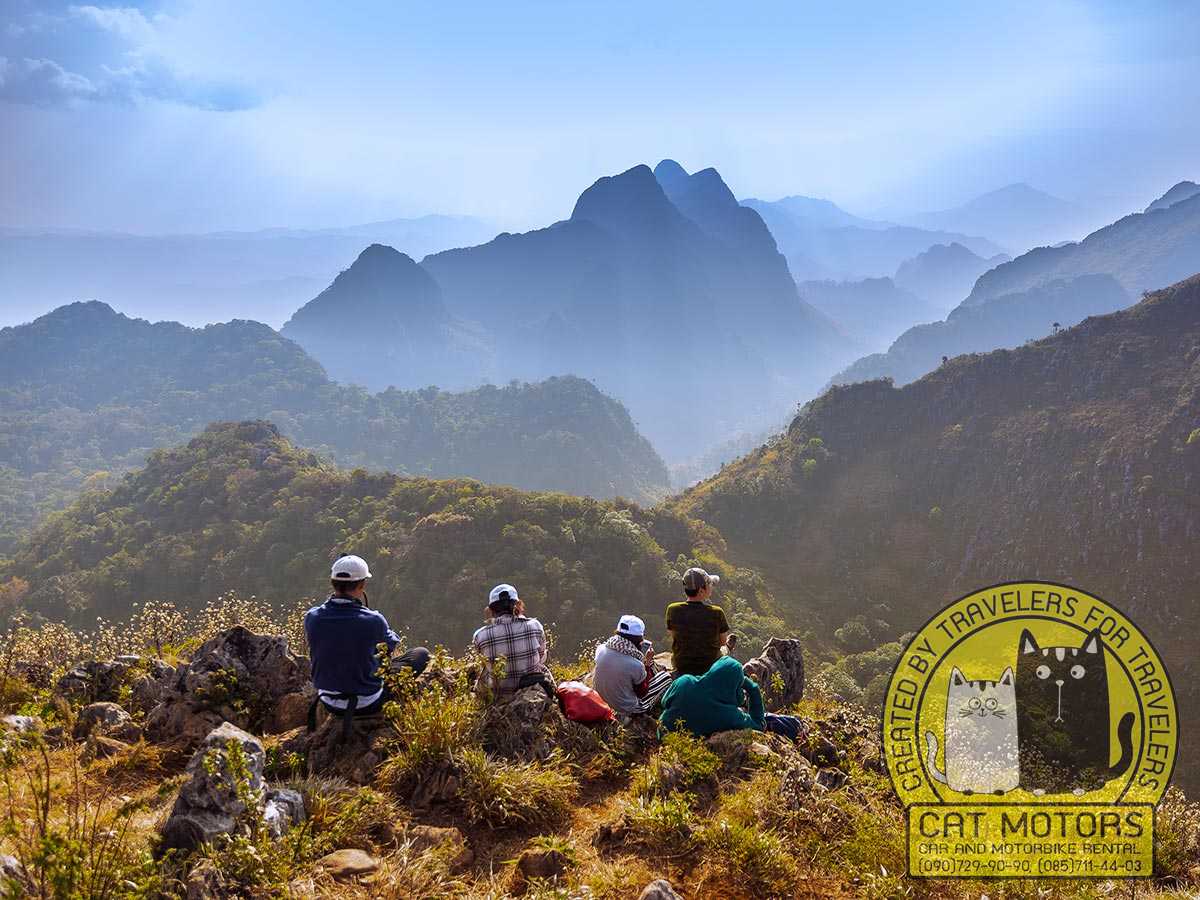
This route passes in some places on very steep slopes, so we do not recommend riding a motorcycle in these places if you do not have enough motorcycle experience, especially if we are talking about motorcycles with a variator, the speed of which cannot be adjusted by the gearbox.
Also, if you are traveling with children, we strongly recommend renting a car instead of a motorcycle, since in our opinion, only madmen who do not care about the safety of their children can travel to these places on a motorcycle with children.
We recommend planning your trip to Doi Ang Khang for 2-3 days because there is so much to see and do along the way.
Chiang Dao Cave and Temple
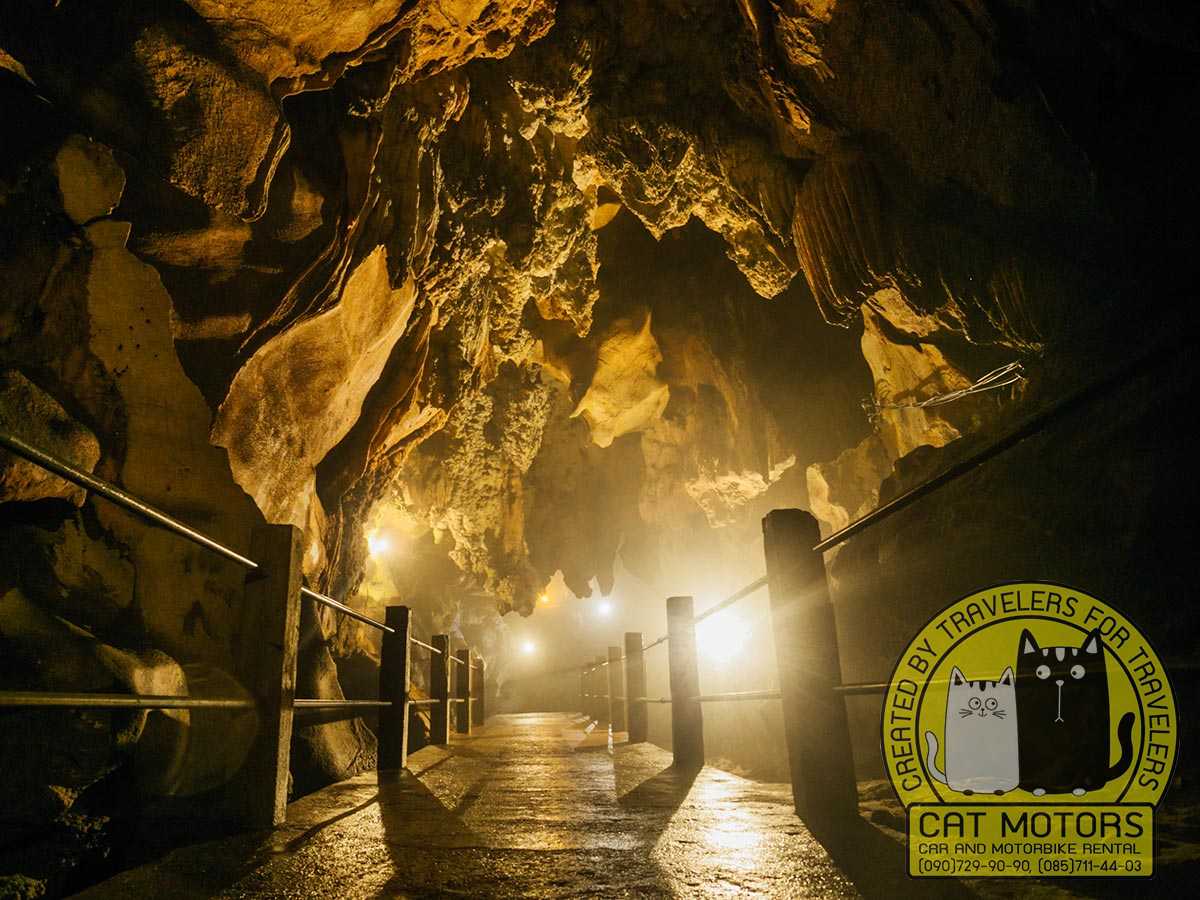
The Chiang Dao Mountain has multiple caves in its crevices. The total length of the caves are said to be about 12 kilometers long, some that have, and have yet, to be explored with most of them being dark. Of the 12 kilometers of cave systems, a few of the caves are open to visitors and have well-lit ceilings and corridors that highlight the stalactites and stalagmite formations.
Most of the cave is inaccessible to tourists but the accessible parts are lead by local tour guides. The main atrium of the Chiang Dao cave is well lit and safe, however, it is advisable to take a small tour with a guide.
A little further from the caves is a temple that is built into the mountain cavern, surrounded by beautiful green scenery, it is a very small, humble place. This Buddhist temple is accessible from the caves although it is better to drive up to it, as parts of the cave route are restricted.
Wat Tham Pha Plong
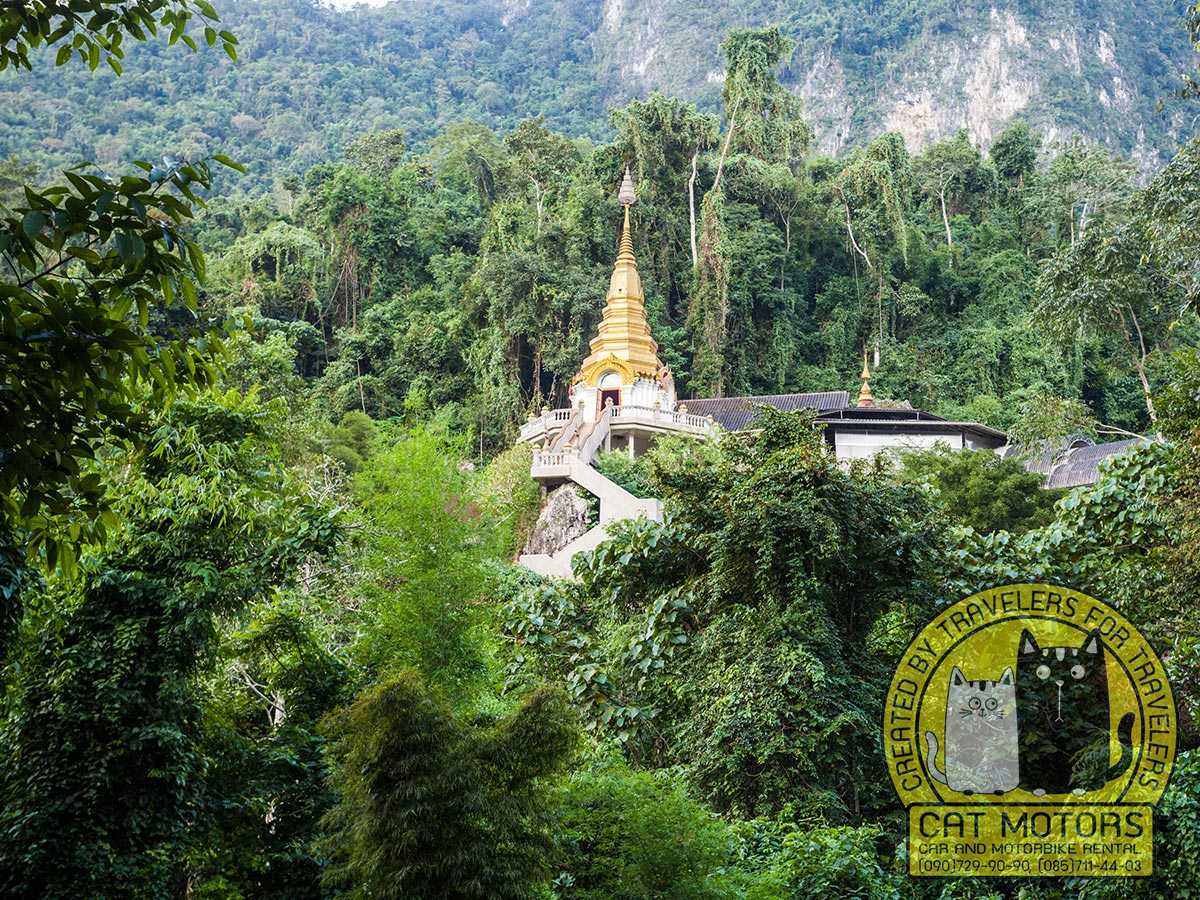
Wat Tham Pha Plong is a cave temple that is located in Chiang Dao, atop a mountain. The temple is interesting because the actual shrine is within a cave, but the golden stupa is located in front of it. The temple is built in typical Thai style with a golden stupa and many Thai carvings on its walls.
501 steps that lead up to Wat Tham Pha Plong, they’re not too steep but can become a little tiring. The temple is usually quiet, with hardly any visitors and has a meditation hall near the main shrine for people who like to meditate.
Buddhist Pagoda of King Naresuan

Also along the route, you can visit the Buddhist Pagoda of King Naresuan (a Thai memorial for a great ruler – being dedicated to King Naresuan or Sanphet the Second).
The memorial is very well maintained and is a place of pilgrimage for most Thai locals. Behind the memorial, there are barracks that you can walk through to get a sense of the history behind the memorial and the great king it is dedicated to.
Sri Sang Wan Waterfall
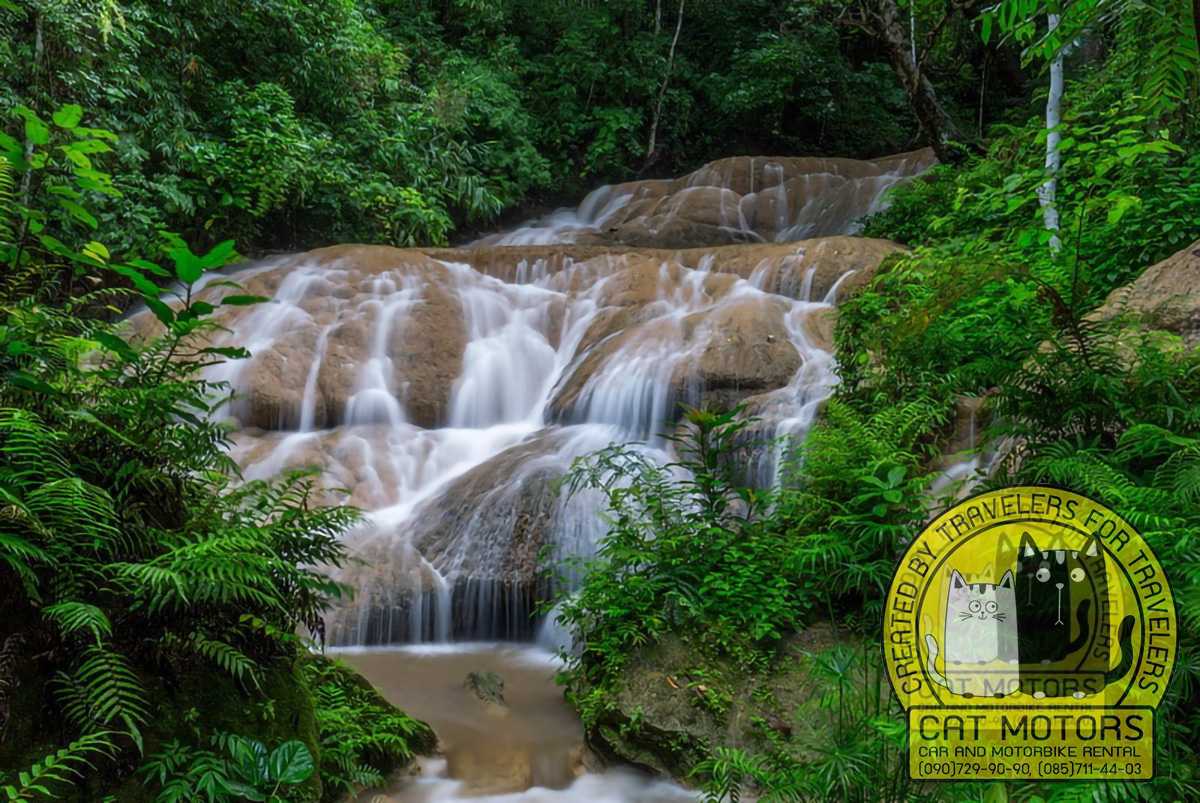
Unknown to travelers, but stunning and wide waterfall with small cooling pools, located in Pha Daeng National Park among tropical flora, is ideal for a picnic. You have to pay a small fee to enter, but it is worth it.
The hot springs nearby and this waterfall are part of the same national park. Thus, by buying one ticket for 100 baht, you can visit both sections several times on the same day. Payment of the vehicle is made additionally.
There are toilets and changing rooms at the hot springs. Hot pools located in the shade of trees look natural and beautiful. The pools have different levels of seating, and the temperature of hot water in them is different. So each visitor can choose for themselves the most suitable option for relaxation.
Some travelers may complain that the water in the hot springs is not very clean. Still, you have to understand that these are natural springs in the forest, not a chlorinated pool in a sports complex in the middle of a bustling city, which is cleaned twice a day. In any case, nature lovers will really enjoy visiting this place.
Did you read our article about the best Muay Thai gyms in Chiang Mai?
Arunothai Village (Burma border)
The remote village of Arunothai is at the tip of Thailand’s border, north of Chiang Dao and along highway 1322 at the Burmese frontier. It’s a place that everybody should visit, (with your mode of transport – especially a motorcycle) because the drive up to this little village is picturesque and beyond compare.
The village is located about an hour from Doi Ang Khang with the best time to visit during the early hours of the morning. The locals have their morning bazaars before 9 am and is an experience that is worth waiting around for. Many little shops serve exceptional food – a must-try being the Chinese noodle soup and dumplings.
Doi Ang Khang
If you haven’t decided where to go and what attractions to see in Northern Thailand, read our Chiang Mai online travel guide.
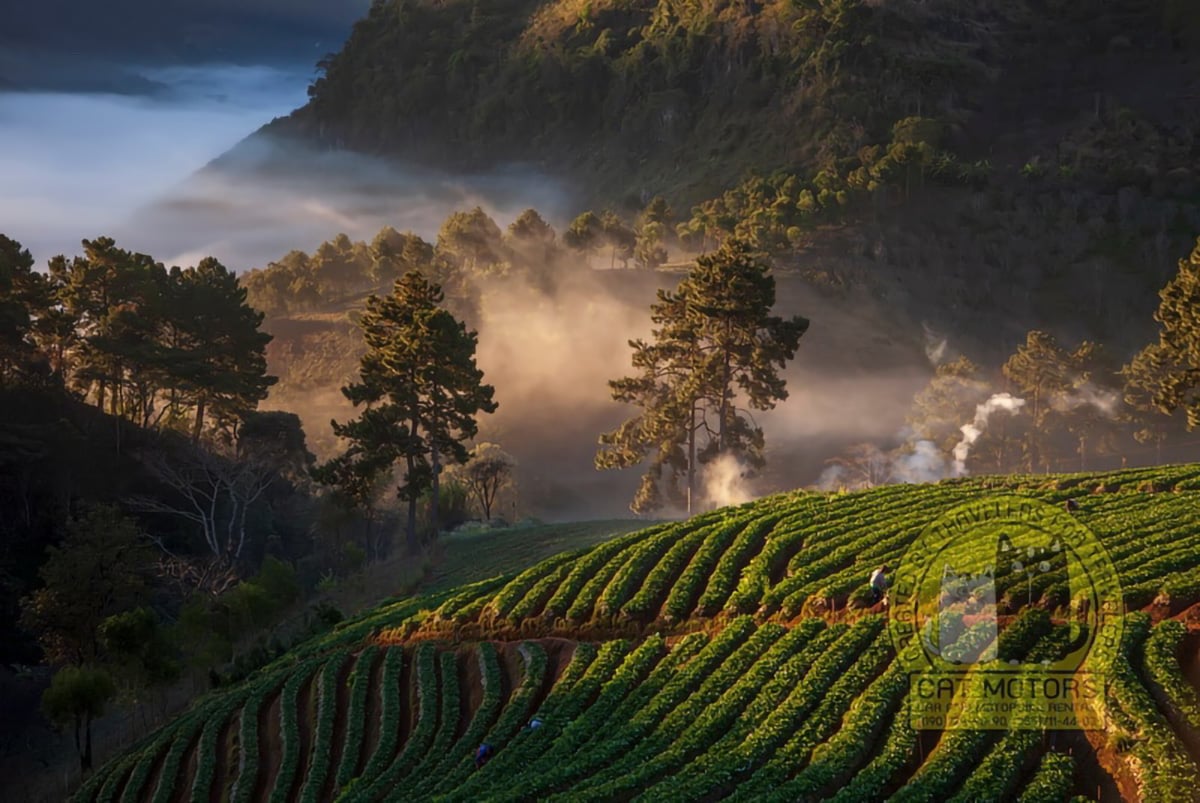
Doi Ang Khang, the 15th highest peak in Thailand at approximately 1928 meters, is a breathtaking part of Doi Pha Hom Pok National Park. Situated about a 3-hour drive from Chiang Mai, this mountain is neighbored by two similarly towering peaks. A haven for bird enthusiasts, the area is teeming with rare avian species, making it a popular destination for tourists each year.
Doi Ang Khang is home to the Lahu and Palaung hill tribes. It’s not unusual to see members of these tribes adorned in their traditional attire, adding a touch of cultural charm to the scenic landscape. The climb on the Thailand side can be quite steep, so for a more comfortable experience, consider using a motorcycle with a manual or semi-automatic transmission. Alternatively, an all-wheel drive car is also a great option for navigating the challenging terrain and reaching the summit to enjoy the spectacular views.
Icy Weather
It can get icy here, with the temperature sometimes dropping below zero. Yeap, this is still Thailand, where the average daily temperature is +30 degrees Celsius.
Plan your trip and outfit in advance so that cold weather doesn’t catch you unawares. In the widget below you can see weather predictions in Doi Ang Khang for the next 4 days.



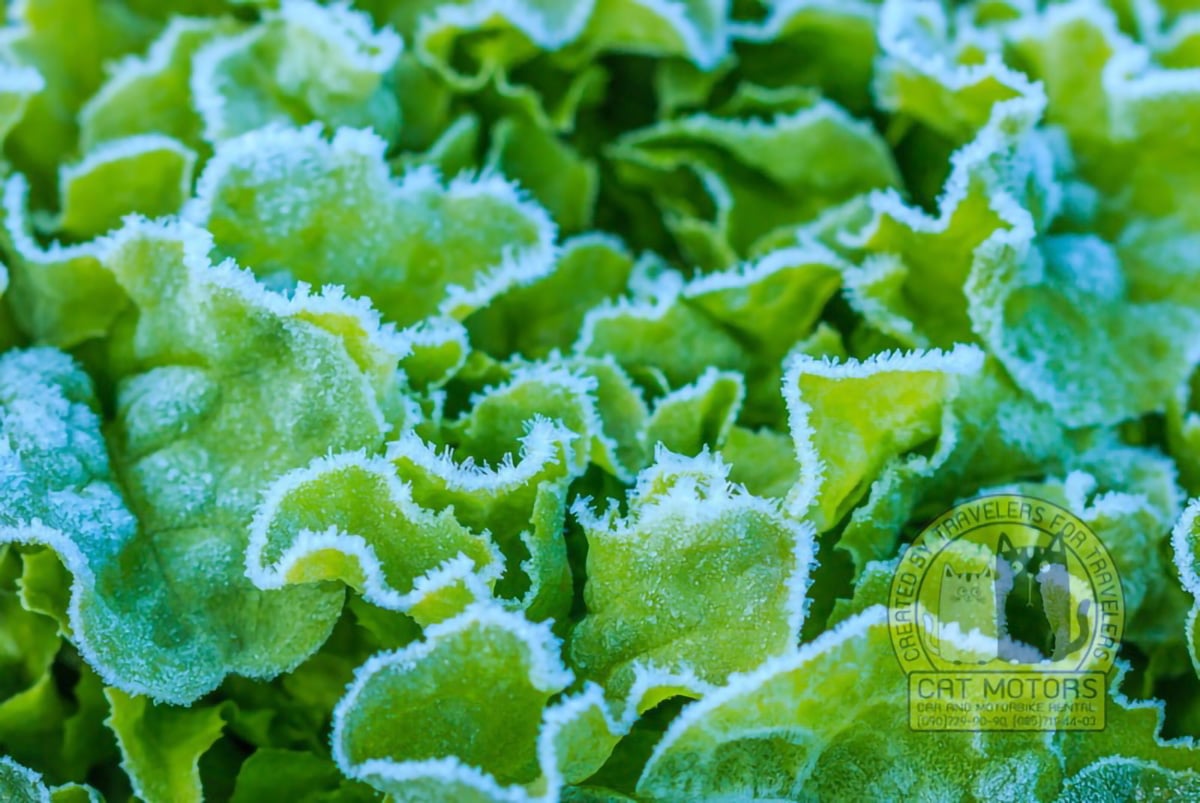

Things To Do
Sakura (Wild Himalayan Cherry) Blossom





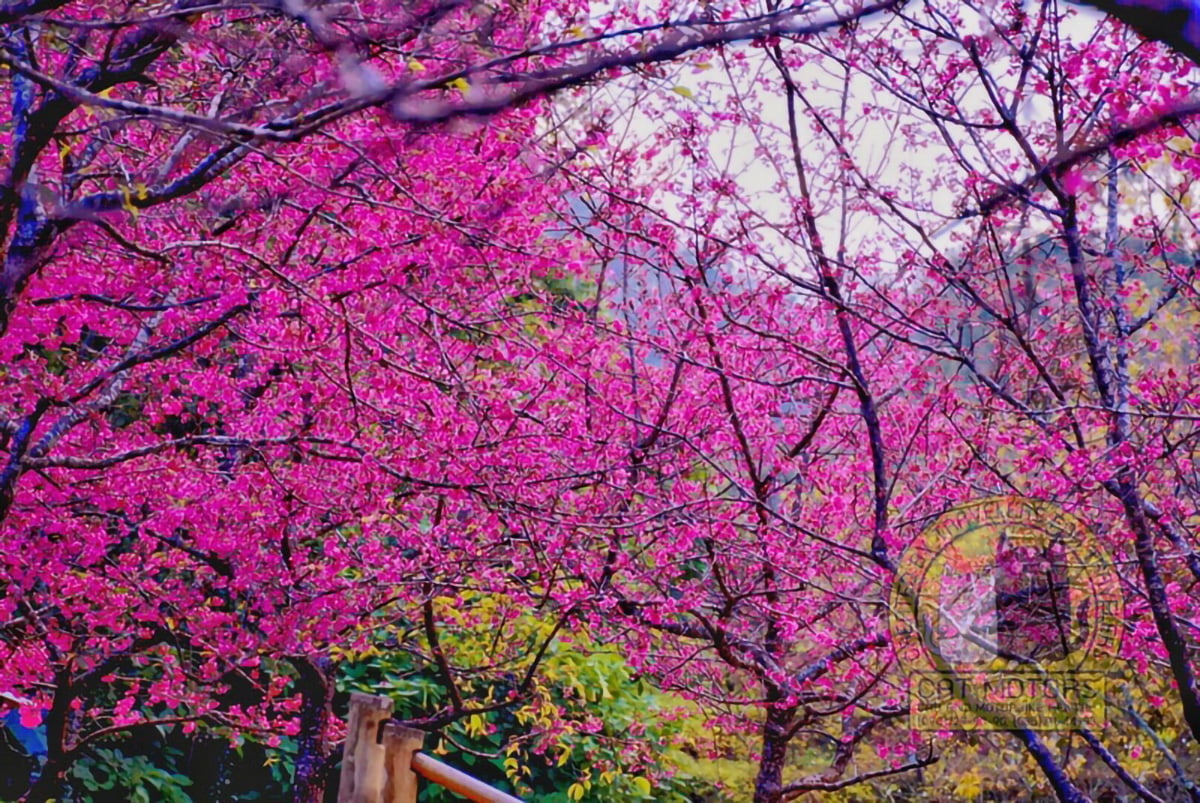

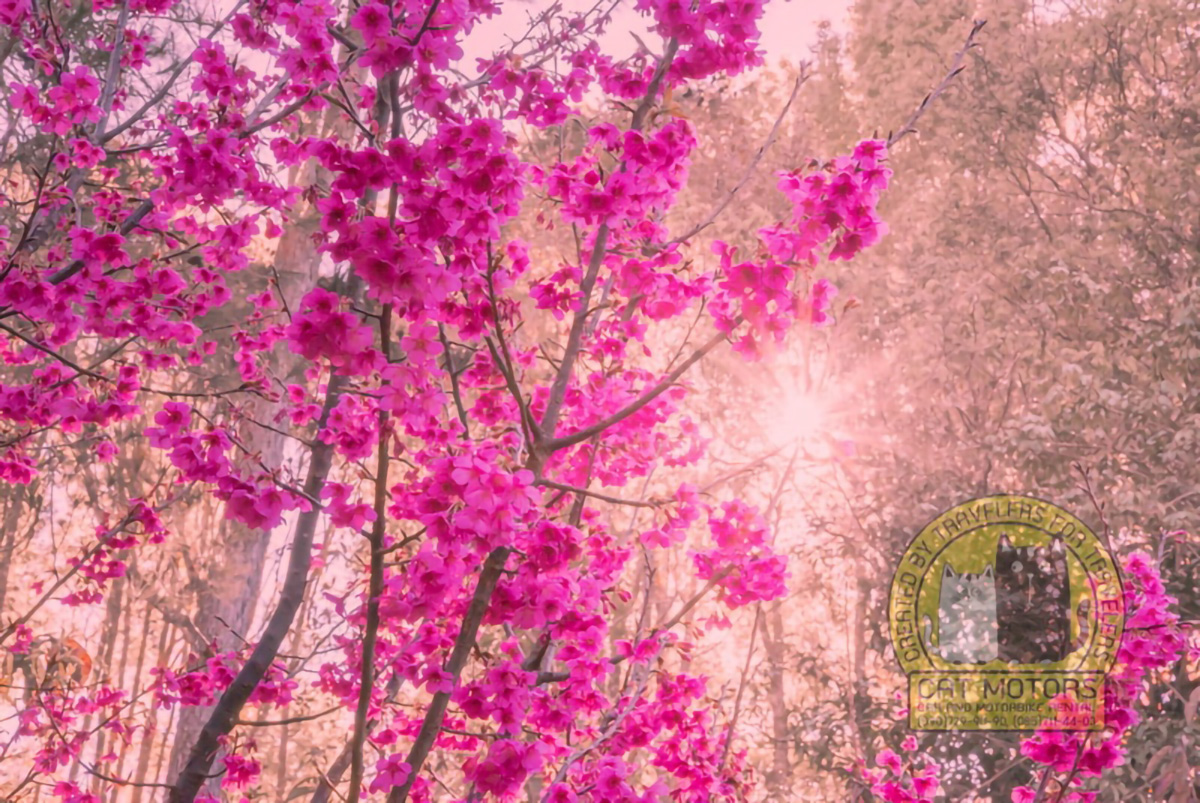


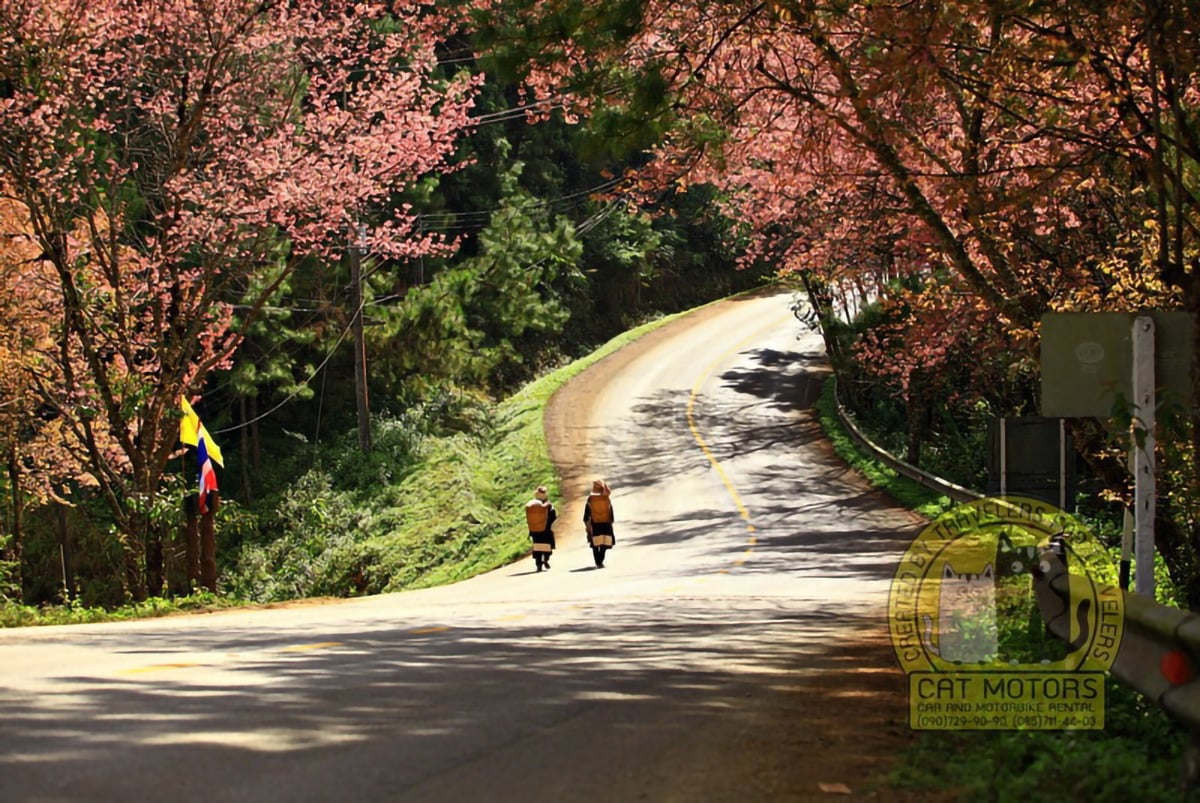
Monson Viewpoint Camping
You can stay overnight in one of the guesthouses, or you can also choose a tent with a beautiful morning view of the boundless sea of fog at Monson Viepoint. You can make your reservation on Ang Khang Monson campground Facebook page (อ่างขางม่อนสน).
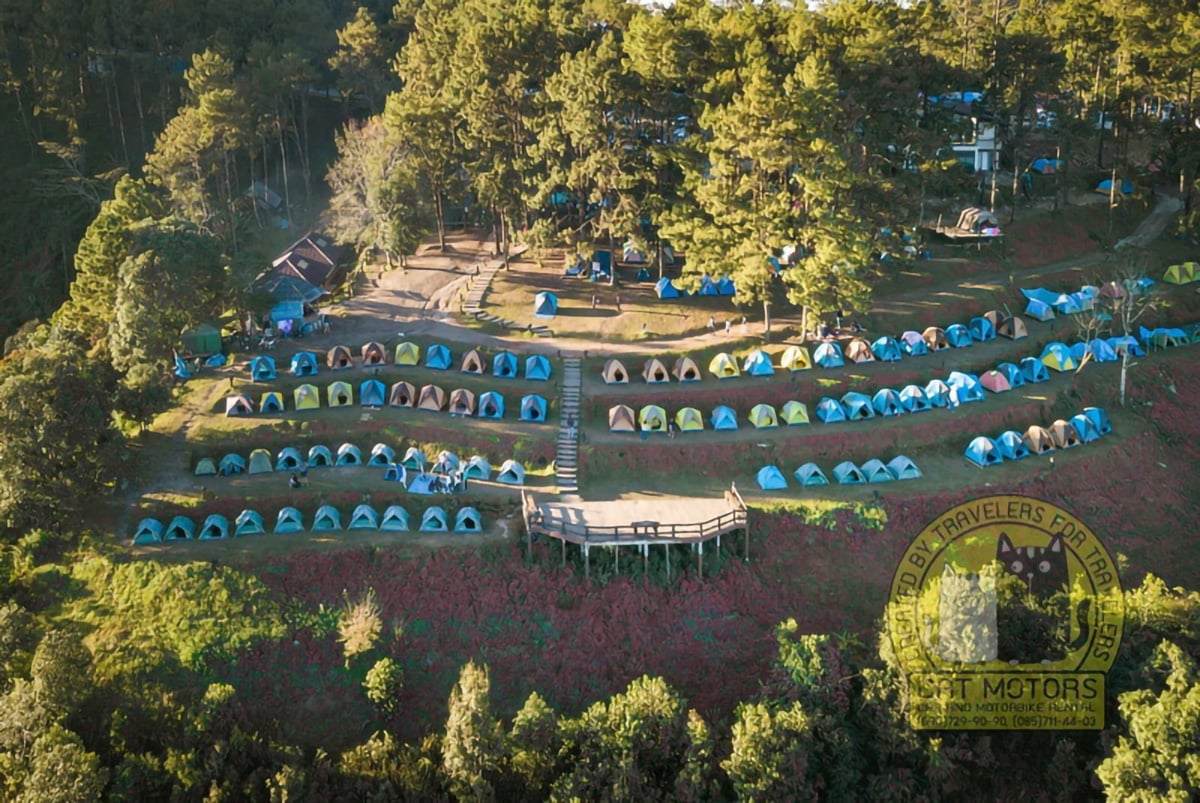



Amazing Sunrise

You must remember that the “sunrise” is the time when the sun has already risen above the horizon. Therefore, if you want to see the sun rise over the horizon – you should wake up about 1-1.5 hours earlier. Recommended time for getting out of bed is 4:30 – 5:30 am depending of the seasons (check here), if you are sleeping in a viewpoint camp.

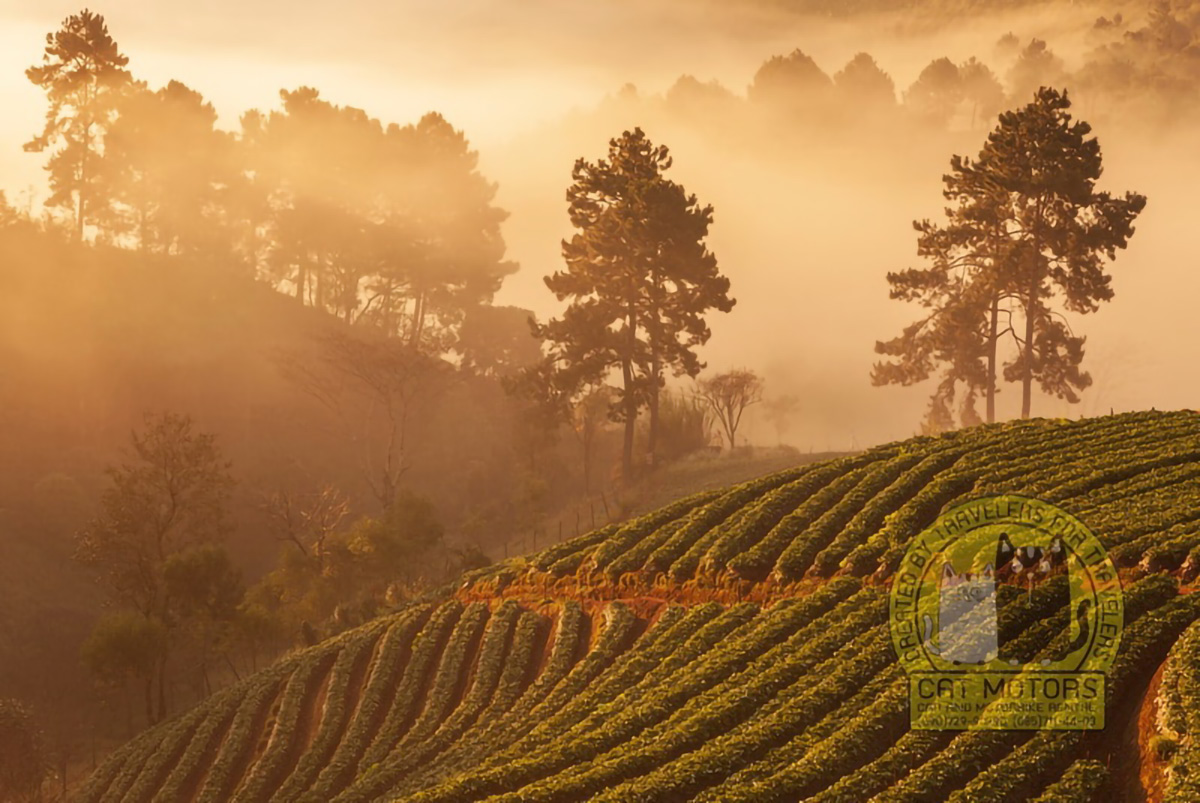

Ban Khop Dong, Musoe hill tribes
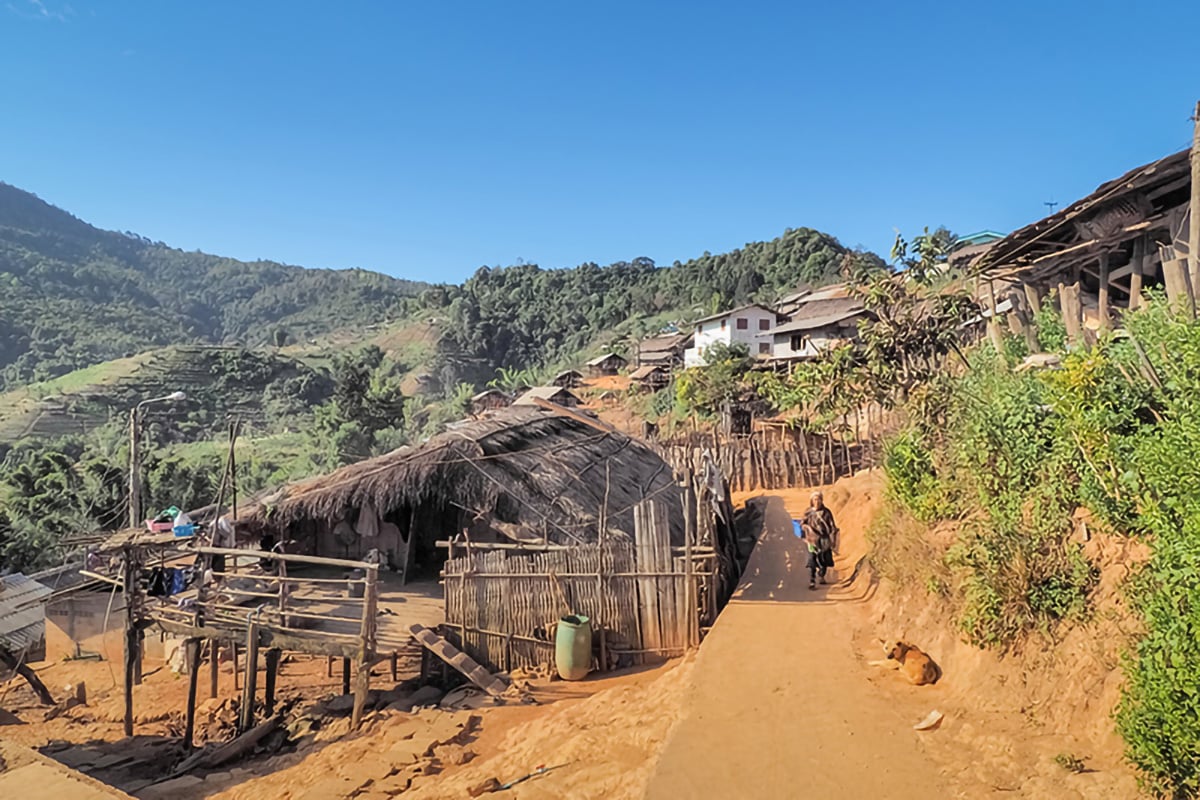
If you are interested in the life of the mountain tribes of Thailand, then on Doi Ang Khang you can find the original mountain tribes of Musoe, Karen, and Lahu, as well as visit one of the mountain villages called Ban Khop Dong, the house of Musoe.
Mountain people of the Khop Dong village believe in spirits and ghosts, as well as in magic rituals. The village is lost among the mountain peaks and dirt roads, and it seems that time has stopped here.
Local Market, Cafe and Food
Agriculture and handicrafts markets and cafes are in the open air so if you are cold, then head into the cafe where you can buy something hot to warm up.


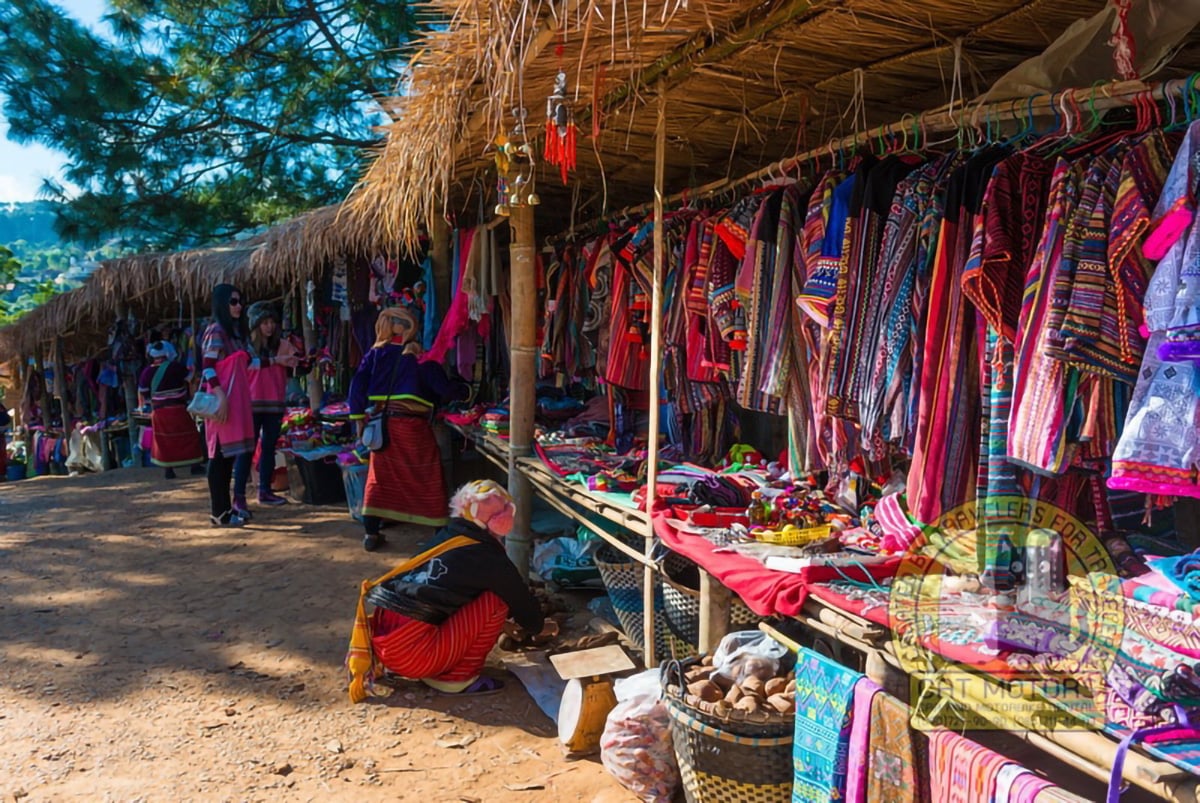


Bird watching
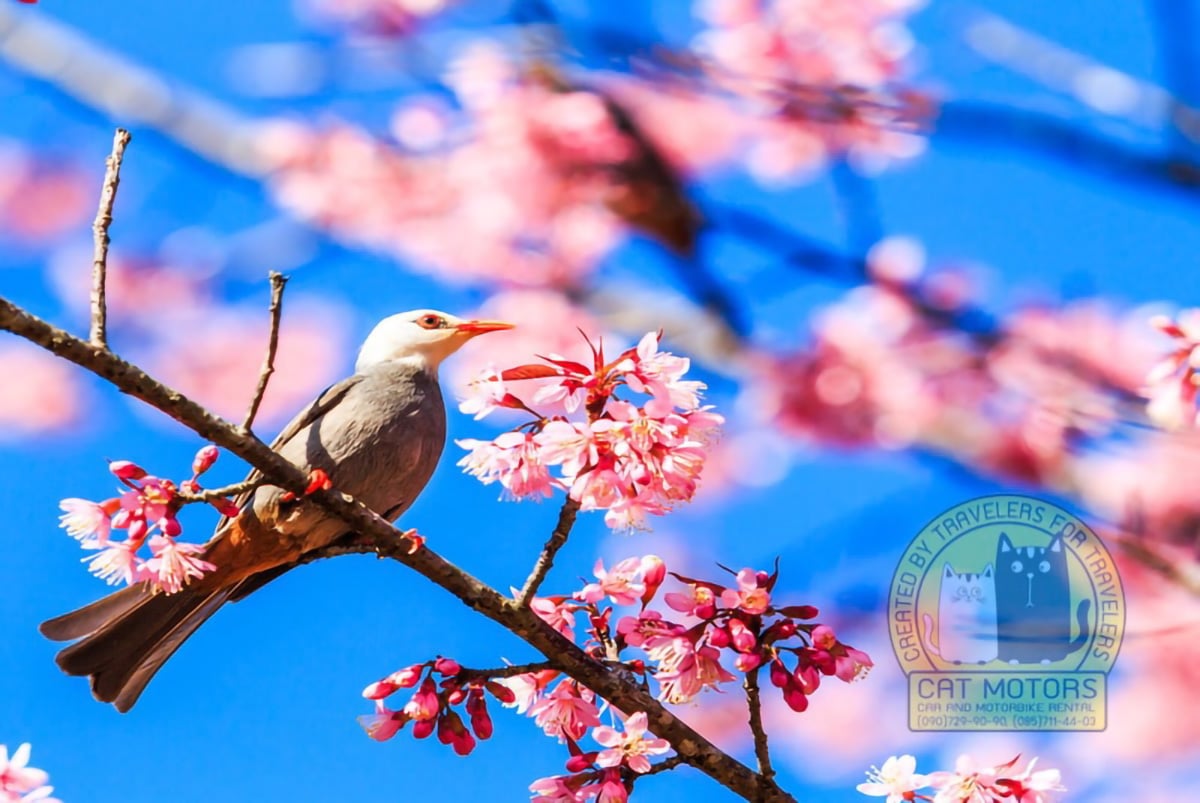

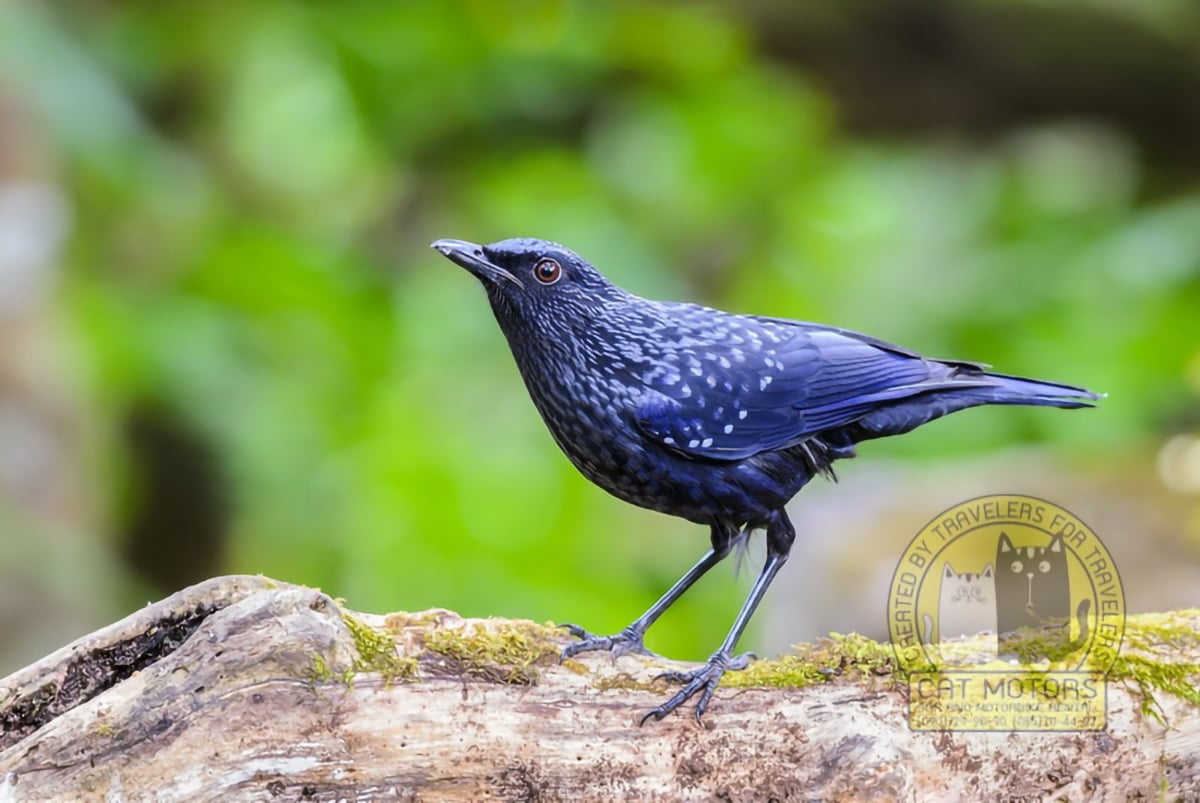
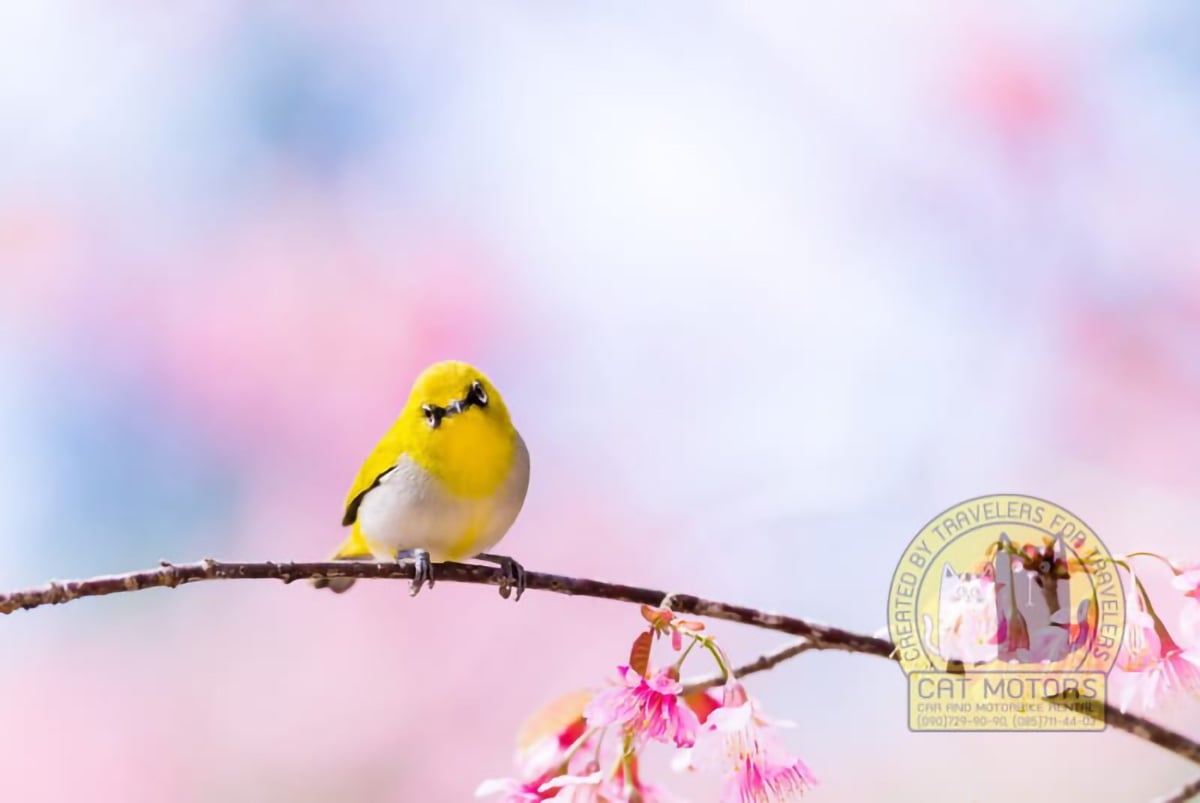
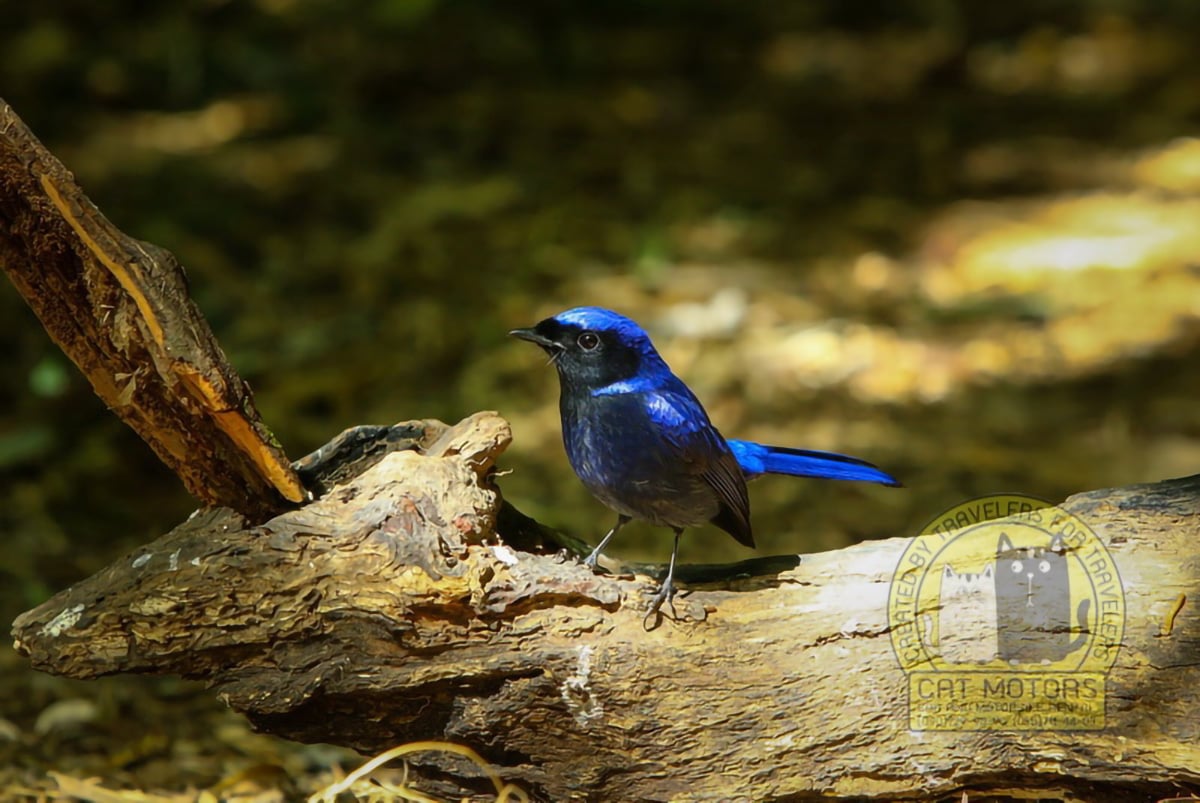
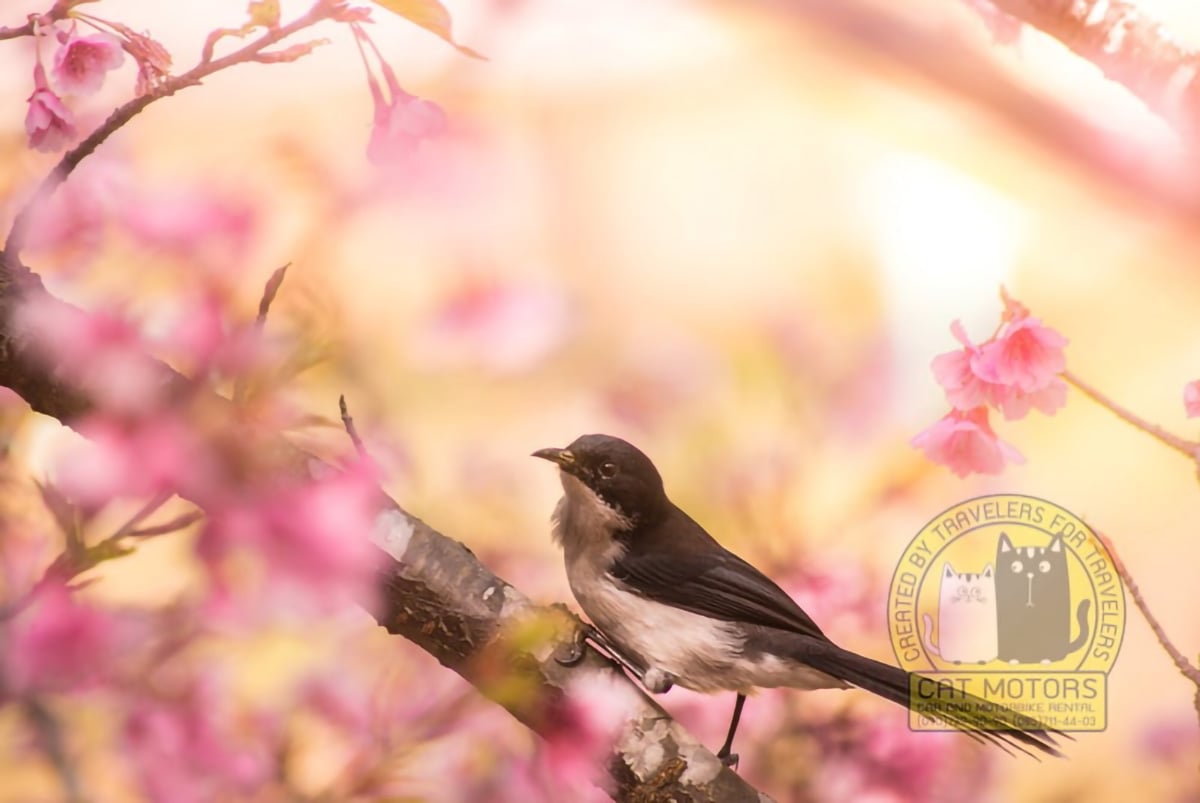

Ang Khang Royal Agricultural Station and Royal Project
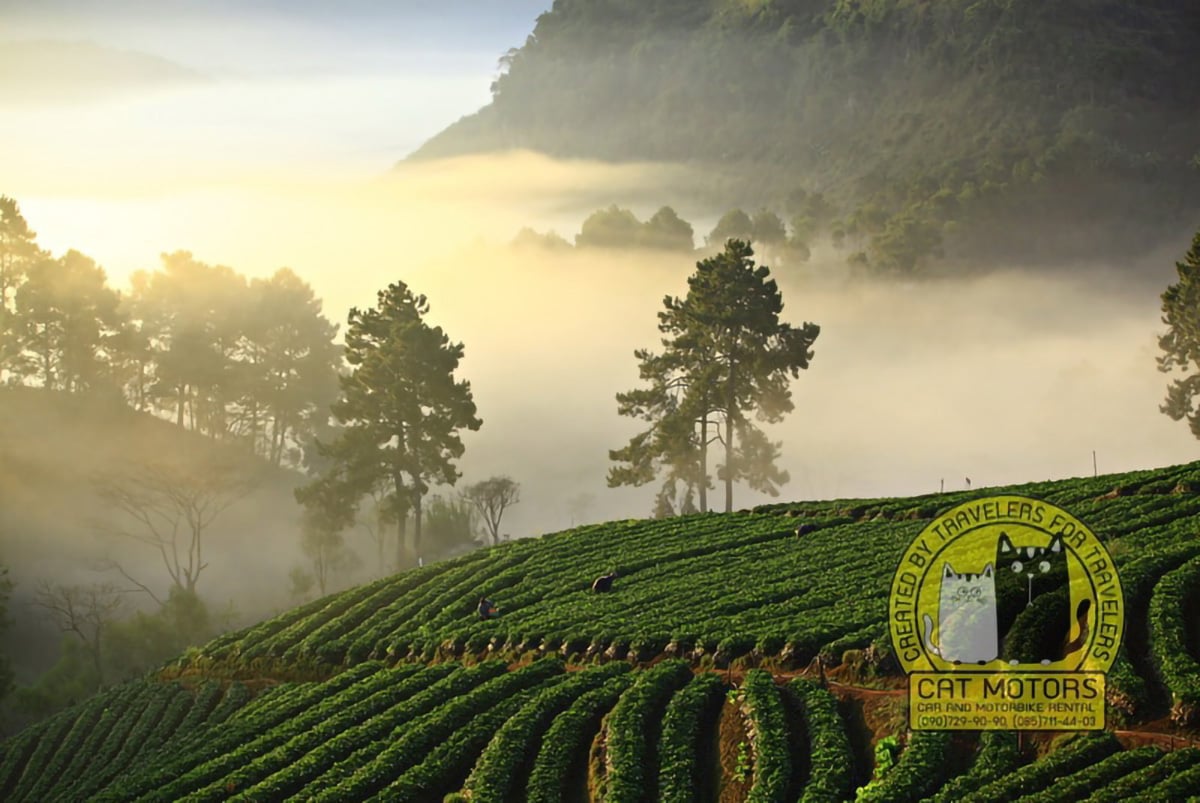
Ang Khang Royal Project started as a way to pacify the summit because at the time the only crop the farmers were growing was opium. The idea behind the project was to provide the farmers with other alternative crops that they could grow in the region.
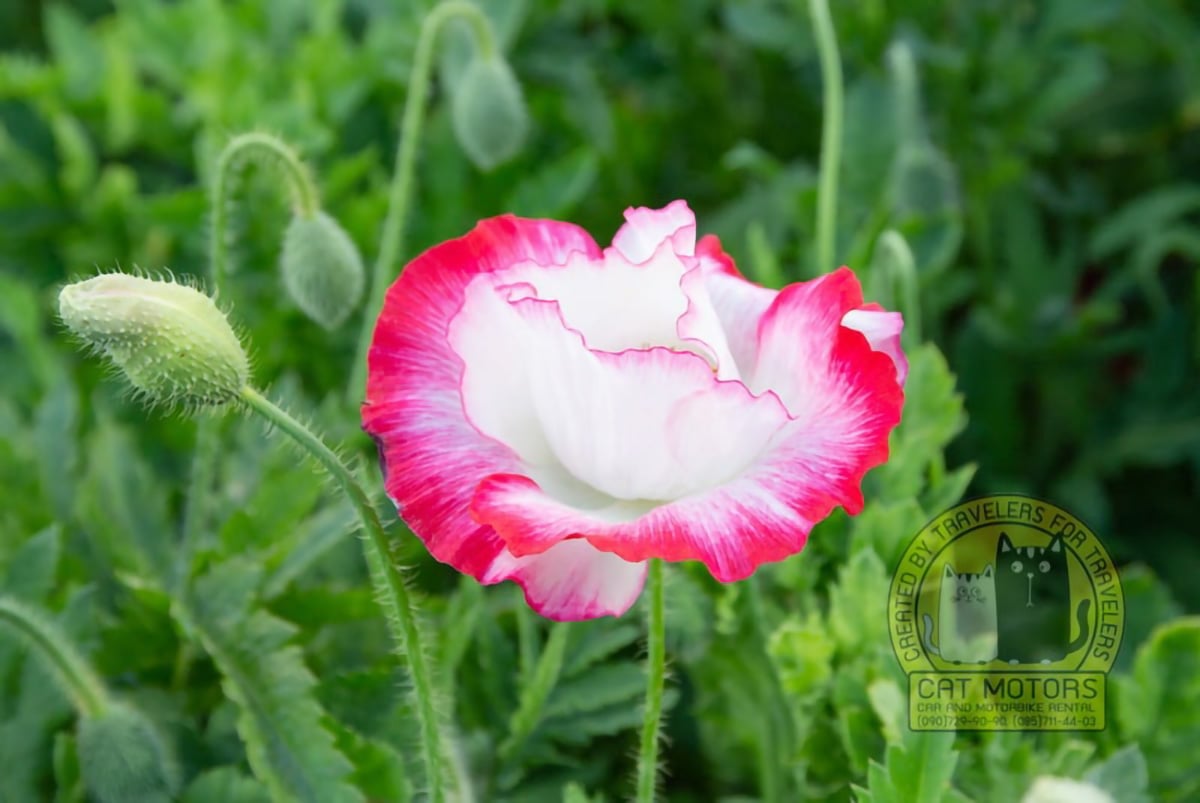


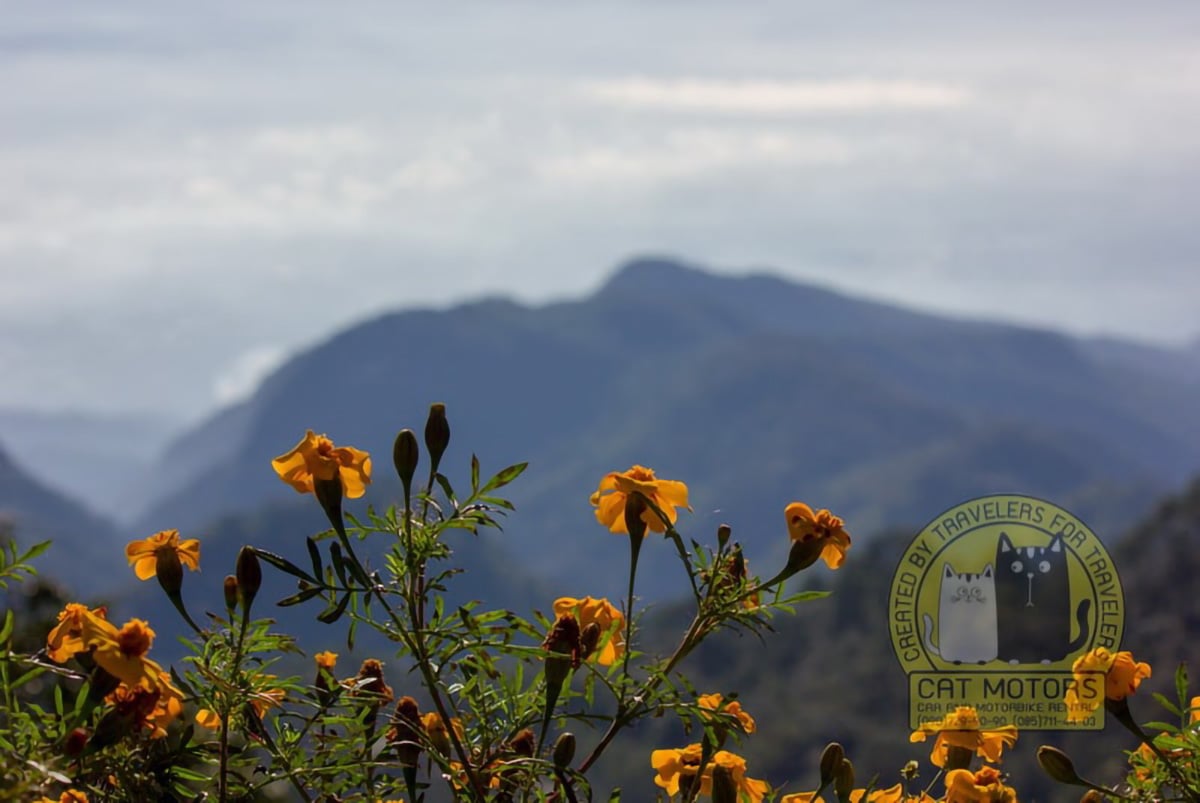
Doi Ang Khang loop is a route that will take you through the tourist attractions in the Doi Pha Hom Pok National Park. The loop is one of the ultimate northern Thailand experiences a traveler can experience and with all the above mentioned attractions, no traveler will be left wondering what to do!
Detour
Fang Hot Spring
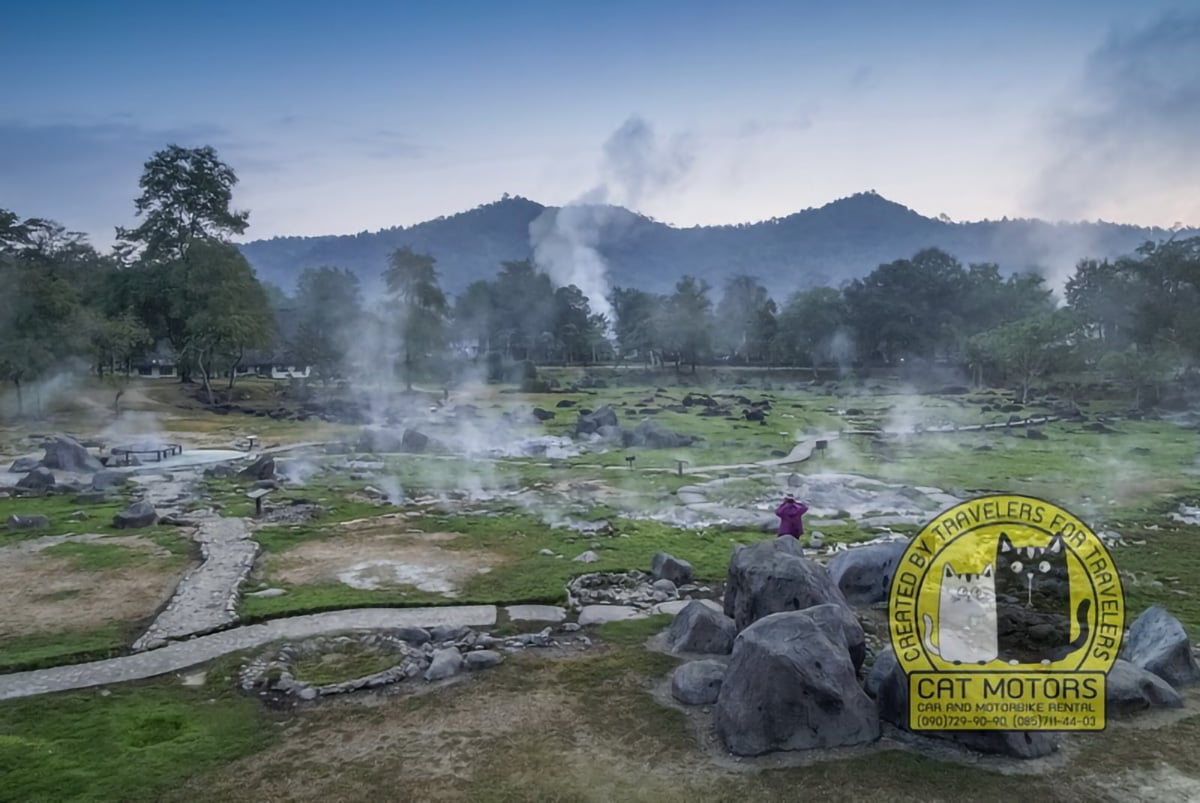
The Fang Hot Springs is in the area of Doi Pha Hom Pok National Park. The hot springs are amidst forests, mountains, greenery and are as close to nature as you can get. The National Park authorities have developed the area to attract tourists but at the same time manage to keep it as natural as possible. For instance, the pathways around the springs are all made of stone and the use of concrete and modern construction material has been kept to a minimum.
On the way to Doi Ang Khang, we suggest that you take a dip into the pools as the water in the pools is said to contain many vitamins and minerals that do the skin and body the world of good. If you are uncomfortable with the water quality, other mineral water pool options are available too.
Quick Facts About Doi Ang Khang
- Location: Doi Ang Khang is situated in Fang District, Chiang Mai Province, Northern Thailand.
- Elevation: It stands approximately 1,400 meters (about 4,593 feet) above sea level.
- Climate: The area features a cooler climate than much of Thailand, especially noticeable from November to January.
- Royal Agricultural Station: Established in 1969 under King Bhumibol Adulyadej’s initiative, this station focuses on agricultural research and sustainable farming practices.
- Crops: Known for its cultivation of temperate-zone fruits, flowers, and vegetables, introduced as part of the region’s agricultural transformation.
- Ethnic Diversity: Home to various hill tribes, including the Palong, known for their vibrant culture and traditional lifestyles.
- Ecotourism: Popular for nature exploration, bird watching, and trekking, with a rich biodiversity of flora and fauna.
- Landmarks: Includes the Ang Khang Royal Project and Nor Lae Village. The Ang Khang View Point is famous for its panoramic views.
- Accessibility: Reachable primarily by road, with the nearest major city being Chiang Mai. The route to Doi Ang Khang involves winding and steep roads.
- Tourist Activities: Offers opportunities for trekking, biking, and exploring local hill tribe communities and markets.
- Accommodation: Various options available, from homestays in local villages to more comfortable lodgings near the Royal Agricultural Station.
- Cultural Significance: The area is a testament to King Bhumibol Adulyadej’s dedication to improving the lives of Thailand’s rural population through sustainable agriculture.
- Bird Watching: A haven for bird enthusiasts, with a chance to spot rare and exotic bird species.
- Photography: A popular destination for photographers, thanks to its scenic landscapes, especially during sunrise and sunset.
- Best Time to Visit: Peak tourist season is during the cooler months, from late October to February.
- Local Cuisine: Offers a unique blend of Thai and hill tribe culinary experiences, with fresh produce from the local farms.
- Historical Context: Doi Ang Khang’s development is closely linked with Thailand’s efforts in opium eradication and the promotion of alternative crops.
Tips For Trip
Traveling to Doi Ang Khang can be a rewarding experience, offering a unique blend of natural beauty, cultural immersion, and agricultural insight. Here are detailed tips to help travelers make the most of their visit:
- Best Time to Visit: Plan your trip between late October and February for the most pleasant weather. This period offers cooler temperatures, ideal for outdoor activities.
- Transportation:
- Rent a Car or Motorcycle: Having your own vehicle offers flexibility. The roads can be steep and winding, so ensure you are comfortable with mountain driving.
- Public Transport: Limited options are available. Buses or shared taxis can be taken to Fang, from where you can hire a local taxi to Doi Ang Khang.
- Accommodation:
- Book in Advance: Especially during peak season (November to January), accommodations can fill up quickly.
- Stay Options: Choose from homestays in local villages for an authentic experience or opt for more comfortable lodgings near the Royal Agricultural Station.
- Packing Essentials:
- Warm Clothes: Evenings and early mornings can be quite chilly.
- Hiking Gear: If you plan on trekking, bring appropriate shoes and gear.
- Rain Gear: Useful during the rainy season (May to October).
- Cultural Sensitivity:
- Respect Local Customs: Dress modestly and be mindful of local traditions, especially when visiting hill tribe villages.
- Ask Permission for Photography: Especially when taking photos of local people and their homes.
- Local Cuisine:
- Try Local Dishes: The region offers a variety of fresh produce. Enjoy the unique blend of Thai and hill tribe cuisine.
- Food Safety: Stick to cooked meals and bottled water, particularly if you have a sensitive stomach.
- Health and Safety:
- Travel Insurance: Ensure you have adequate travel insurance covering medical emergencies.
- Stay Hydrated: Keep yourself hydrated, especially while trekking.
- Activities and Sightseeing:
- Visit the Royal Agricultural Station: Learn about local agriculture and see the beautiful gardens.
- Trekking: Explore the various trails, but always inform your accommodation where you’re going.
- Bird Watching: Bring binoculars if you’re a bird enthusiast, as the region is known for its diverse birdlife.
- Shopping:
- Local Markets: Visit local markets for handicrafts and fresh produce. Purchasing these supports the local economy.
- Language:
- Basic Thai Phrases: Learn a few phrases in Thai. English is not widely spoken, especially in rural areas.
- Environmental Responsibility:
- Leave No Trace: Dispose of your waste properly and respect the natural environment.
- Conserve Water: Be mindful of your water usage, as resources can be limited.
- Staying Connected:
- Wi-Fi Access: Limited in remote areas. Consider a local SIM card for better connectivity.
- Cash is King:
- Carry Cash: Many places, especially in rural areas, do not accept credit cards.
- Emergency Contacts:
- Local Emergency Numbers: Keep a list of emergency contacts, including local hospitals and police stations.
By following these tips, travelers can ensure a more enjoyable and respectful visit to Doi Ang Khang, immersing themselves in the natural beauty and cultural richness of this unique destination in Northern Thailand.
Pros & Cons
Traveling to Doi Ang Khang offers a distinctive experience, blending natural beauty with cultural and agricultural insights. However, like any destination, it has its own set of pros and cons:
Pros
- Natural Beauty: The region is renowned for its stunning landscapes, including mountains, forests, and gardens, ideal for nature lovers and photographers.
- Cooler Climate: Offering a respite from Thailand’s typically hot climate, especially from November to January, it’s a pleasant escape for those seeking cooler temperatures.
- Cultural Immersion: The presence of various hill tribes, such as the Palong, provides an opportunity to experience diverse cultures, traditions, and handicrafts.
- Agricultural Insights: The Royal Agricultural Station is a testament to innovative and sustainable farming, offering educational insights into agricultural practices.
- Outdoor Activities: With options for trekking, bird watching, and biking, it’s a haven for outdoor enthusiasts.
- Peaceful and Less Crowded: Being off the typical tourist path, Doi Ang Khang offers a more tranquil and authentic experience compared to more popular destinations.
- Unique Culinary Experiences: The availability of fresh, locally-grown produce contributes to a unique culinary experience, blending Thai and hill tribe cuisines.
Cons
- Limited Accessibility: The area is relatively remote with steep, winding roads, making access challenging for those not comfortable with mountain driving.
- Limited Public Transport: Public transportation options to and from the area are limited, potentially complicating travel plans for those without private transport.
- Language Barrier: English is not widely spoken, especially in rural areas, which may pose challenges for international travelers.
- Basic Amenities: Some accommodations and facilities are basic, lacking the luxuries that some travelers may expect.
- Seasonal Limitations: The rainy season (May to October) can limit outdoor activities due to heavy rains and slippery trails.
- Cool Evenings and Mornings: Travelers may be unprepared for the cooler temperatures, especially during the night and early morning.
- Limited Nightlife and Entertainment: The area is not known for its nightlife or urban entertainment, which might not appeal to those seeking a more lively atmosphere.
- Connectivity Issues: In remote areas, Wi-Fi and mobile connectivity can be limited, impacting travelers who need constant access to the internet.
Understanding these pros and cons can help travelers prepare better and set appropriate expectations for their journey to Doi Ang Khang, ensuring a more enjoyable and fulfilling experience.
YT Video Review (En & Th)
Aerial Cinematic
Drone flights around Doi Ang Khang. Great aerial view from which you can see mountains, fields, meadows, tea plantations, and much more.
Different Scene
Guys ride motorbikes along the route and pleasant Thai music sounds in the background. Here you can see what roads you have to drive on the way to this place. This video was released in 2016, but you can be sure that the quality of roads is just as good right now.
Dr.David
Here you can see how people who arrived at the top of the Doi Ang Khang mountain meet the sunrise.
Pay attention to how they are dressed! It is really very cold there, and this is not a joke! Dress warmly!
FAQ
The temperature in Doi Ang Khang ranges from 10-25°C (50-77°F) all year round. The coldest months are December and January when temperatures can drop as low as 5°C (41°F). Therefore, if you are traveling at this time and staying overnight, it is best to dress warmer, including sweaters and knit hats.
Himalayan cherry blossoms can be seen from mid-December to mid-February. However, the best time to see the cherry blossoms is mid to late January, when the blooms are most lush and vibrant. However, don’t forget that many tourists from all over Thailand flock here during this time, and it can be very crowded. Therefore, plan your trip in advance.
The cost of camping at Doi Ang Khang starts at about 200 baht ($6.50) per night. Despite the low price of accommodation, you will have a delightful morning view of the sea of mist from your tent. On the other hand, the more luxurious campsites can cost up to 1,000 baht (US$32) a night or more. But the biggest problem is that you can only book your campsite accommodation when you arrive, as campsites don’t cooperate with the booking platforms. Therefore, it is better to come here early in the morning when there are not many tourists.
First, it is known for its stunning views of the mountains and surrounding countryside, tea plantations, and hill tribe villages. But the main reason for its popularity in Thailand is that Doi Ang Khang is one of the coldest points in Thailand, which makes this mountain a tourist destination for Thais who live year-round in hot climates. It is also a popular place for trekking and mountain biking.
In the northern Thai dialect, the name Doi Ang Khang means “Elephant Mountain.” The mountain was so named after the wild elephants that roam the area in large numbers.
You can get to Doi Ang Khang by car or motorcycle. Or alternatively, by bus or cab. In our company, you can rent a motorbike, but if you need to rent a car, in that case, we recommend you EconomyBookings or RentalCars.
If you’re traveling by car or motorcycle, follow Google Maps’ recommendations and explore all the places described in our travel guide.
If you are traveling by cab, you can book a private minibus. The duration of the trip will be about 3 hours and will cost you about 3,600 baht.
If you are traveling by bus, you first need to go to Chang Phuak Bus Station, where the bus leaves every 30 minutes to Fang town. The journey is about 3 hours, and the ticket price is 100 baht. Once you get to Fang, you must take a cab at the bus station, which will take you to Doi Ang Khang for about 400-500 baht.
Northern Thailand’s winding roads and vibrant culture are best explored on two wheels. Our comprehensive guides offer insights into the most scenic routes and must-see attractions. To start your journey, explore our scooter hire in Chiang Mai section for top-rated bikes. Make sure to review our rental terms to understand all the necessary details. This way, you’ll be ready to enjoy the serene landscapes and quaint towns along the way. Dive into the heart of Northern Thailand with confidence, knowing you have the best information at your fingertips.
Additionally, make sure to visit our tips and advice sections, where you’ll find essential recommendations for safe and enjoyable riding. Our website is packed with valuable information to help you make the most of your motorbike adventure. By utilizing these resources, you can ensure a well-planned, memorable trip that captures the true essence of Northern Thailand’s natural and cultural treasures.
See you!
Cat Motors Team
Was this post useful for you?
You can rate it by clicking on a star
Average rating / 5. Vote count:
No votes so far! Be the first to rate this post.
We are sorry that this post was not useful for you!
Let us improve this post!
Tell us how we can improve this post?
- Author: Krit Sorenser
- Updated: March 26, 2025
- No Comments




